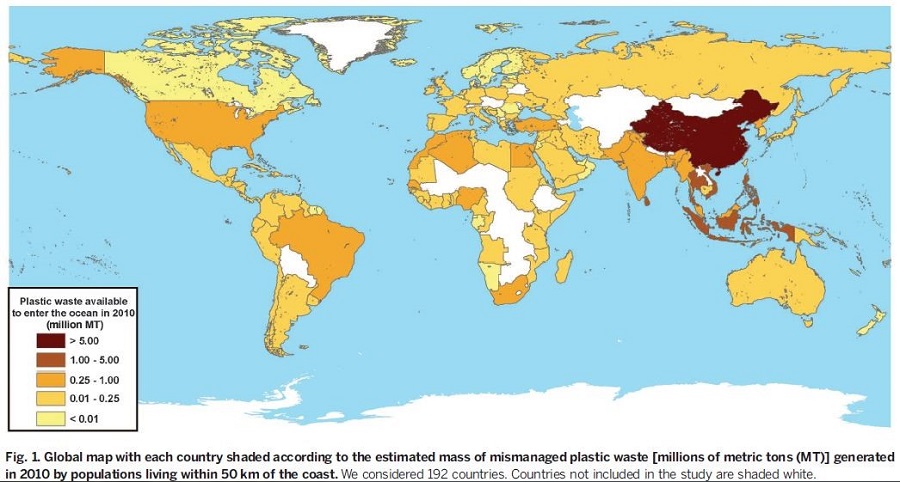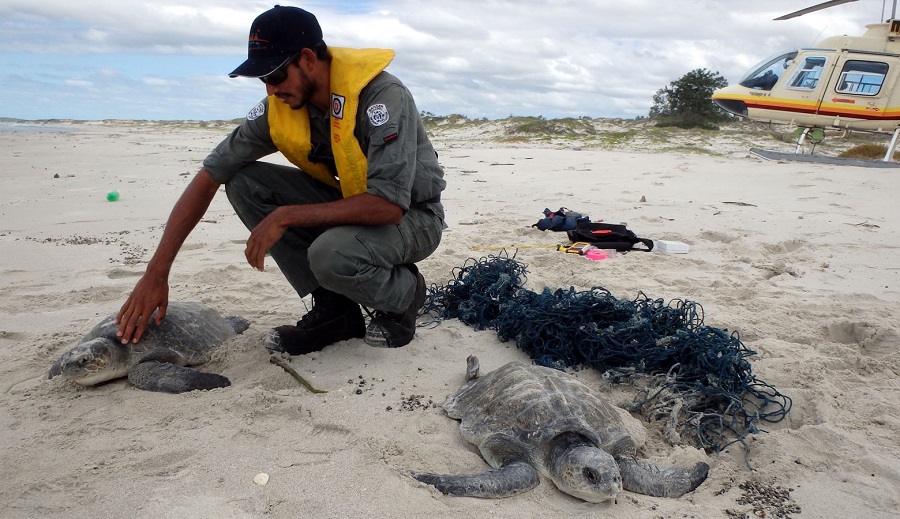We’re taking on the world’s largest marine pollution survey, working with countries and using science to reduce the amount of litter entering our oceans.
We’re taking on the world’s largest marine pollution survey, working with countries across the globe by using science to reduce the amount of litter entering our oceans.

A photo of a location in Indonesia prior to it being cleaned compared with the now-clean waterway.
These photos of a waterway in Indonesia show the marine pollution problem can be solved Credit: Kompas/Wawan H Prabowo
Drowning in litter
It’s no secret that our oceans and waterways are drowning in waste, a by-product of the world’s economic growth.
To date, the best estimates say there are around 8 million metric tonnes of plastic going into the oceans each year – that works out to be around 16 shopping bags for each metre of global coastline (excluding Antarctica).

A map of most polluted countries in the world
The best estimates to date of each countries impact on marine pollution (Credit: Jambeck et al. 2015)
More than 690 marine animals are reported to be impacted by this litter, with seabirds and turtles arguably two of the groups of species most heavily affected.
Tube-nosed seabirds like shearwaters, petrels and albatrosses are thought to be attracted to the smell of the plastic, which once in the water and after a bit of radiation from the sun, starts to smell like their food.

A dead sea bird's stomach is opened and is filled with plastic
Almost 50 per cent of sea birds have plastic in their guts – a number our scientists expect to climb to 95 per cent in the next 30 odd years.
Turtles also mistake plastic for food and it’s believed that as many as a third of turtles have eaten plastic, mistaking it for tasty jellyfish.

Two turtles being cut out of fishing nets
Turtles are also impacted by other rubbish, especially fishing nets and other gear which in northern Australia is estimated to have entangled around 15,000 turtles.
It’s not just wildlife either that’s impacted. In developing countries where the waste and storm water infrastructure isn’t advanced, rubbish (particularly plastic bags and other thin, film-like plastics) can choke gutters and drains, resulting in significant flooding events, damaging homes and harming local people.
So what’s being done?
Globally, there’s a consensus that the issue needs immediate attention. In February, our scientist Dr Denise Hardesty presented to the world’s first G20 meeting on marine pollution. And the plastic pollution topic is the official theme for World Oceans Day 2017.
The issue is also front and centre this week at the UN’s Ocean Conference in New York, with the international group’s first target to:
“By 2025, prevent and significantly reduce marine pollution of all kinds, in particular from land-based activities, including marine debris and nutrient pollution.”
How do we tackle such a big issue?
This is where our new research comes in, as we launch the world’s largest marine pollution project.
Some of the world’s top 20 polluters will take part in the project including China, Bangladesh, Indonesia, Vietnam and the United States, plus other countries including Australia, South Korea and Taiwan.
Up until now researchers and policy makers have relied on marine debris estimates based on World Bank data, so this will be the first time anyone has brought together a group of countries to collect on the ground data (literally!) to look at exactly how much litter is entering the oceans.
Leading the research is our marine ecologist Dr Denise Hardesty.
“This is a problem that is absolutely solvable and we’re already seeing some countries make significant improvements,” said Denise.

Before and after image of a dirty waterway in Indonesia
Before and after photos of a waterway in Jakarta Credit: Kompas/Wawan H Prabowo
“By coordinating our approach we’ll be able to achieve some quick wins and know where to set our sights for longer-term goals.”
Our marine debris team specialises in looking at how people, wind, the shape of the land and storm water moves rubbish from land out into the ocean.
“We know that almost all litter started off in someone’s hand, and from there it finds it ways from land to the ocean, where it breaks up into smaller pieces,” said Denise.
“By looking at how the litter makes its way into the ocean, we’ll be able to work with countries to implementing interventions and solutions that are underpinned by science.”
We’ll make the data available to participating groups and countries, so they can report what’s happening at the local level and compare this to other countries around the world. Denise and her team are keen to work with as many countries as possible.
“Working with in-country organisations already doing important work will be key to the project’s success” said Denise.
The project is a collaboration between CSIRO, Oak Family Foundation and Schmidt Marine.


22nd July 2018 at 2:04 pm
Start with the manufacturers of plastic.
5th June 2018 at 6:11 pm
We need to move away from using single use plastic packaging. There are plenty of other alternatives and we used them before plastic was invented.
16th June 2017 at 3:35 pm
I notice Garbage Disposal devices are still available for sale in Bunnings Hardware chain to be fitted to kitchen sinks. People take the easy way out and put everything through the garbage grinder to save them taking rubbish out to the garbage bin. Much of this rubbish is plastic which ends up in the sewerage system and finds its way into the rivers and seas. Ban the sale of Garbage Grinders and this could be stopped.
13th June 2017 at 7:01 pm
Appreciate the unsung work of the researchers investigating this problem